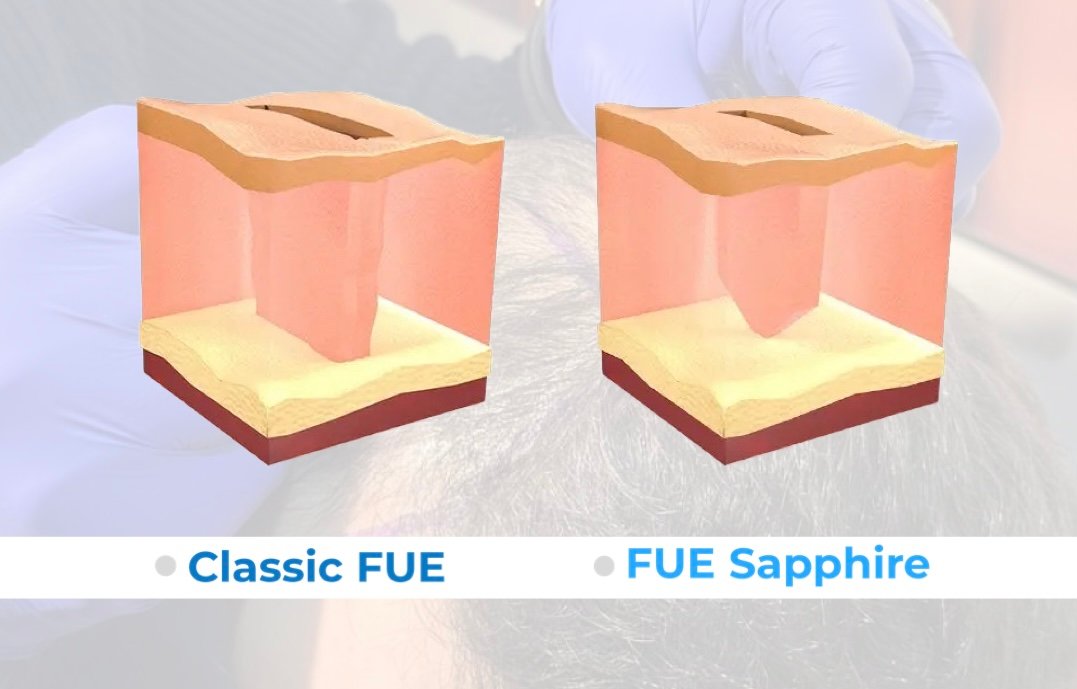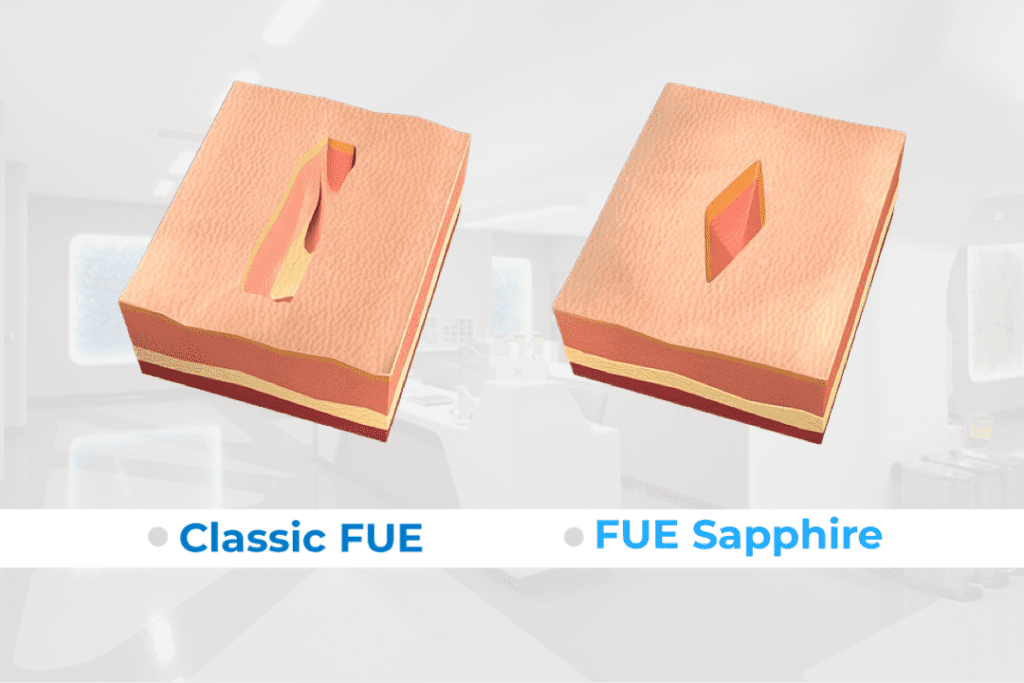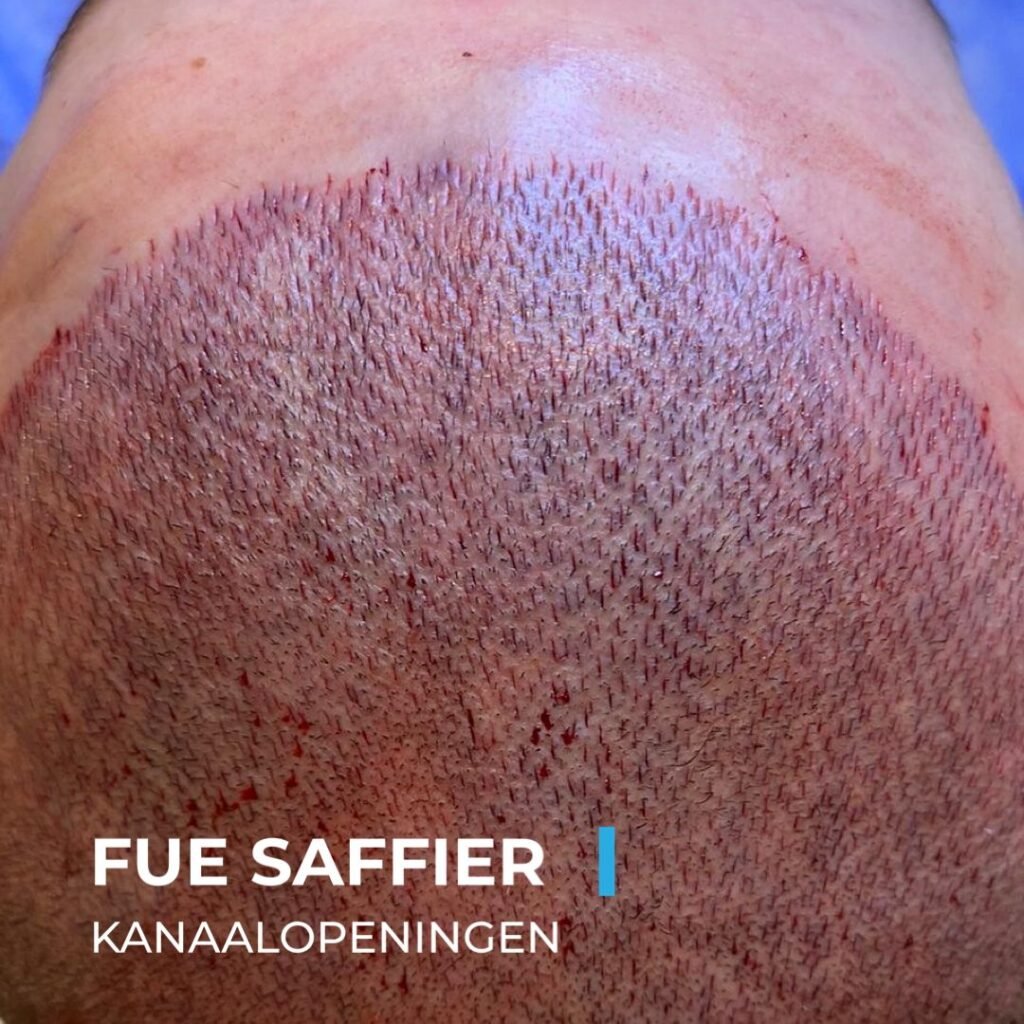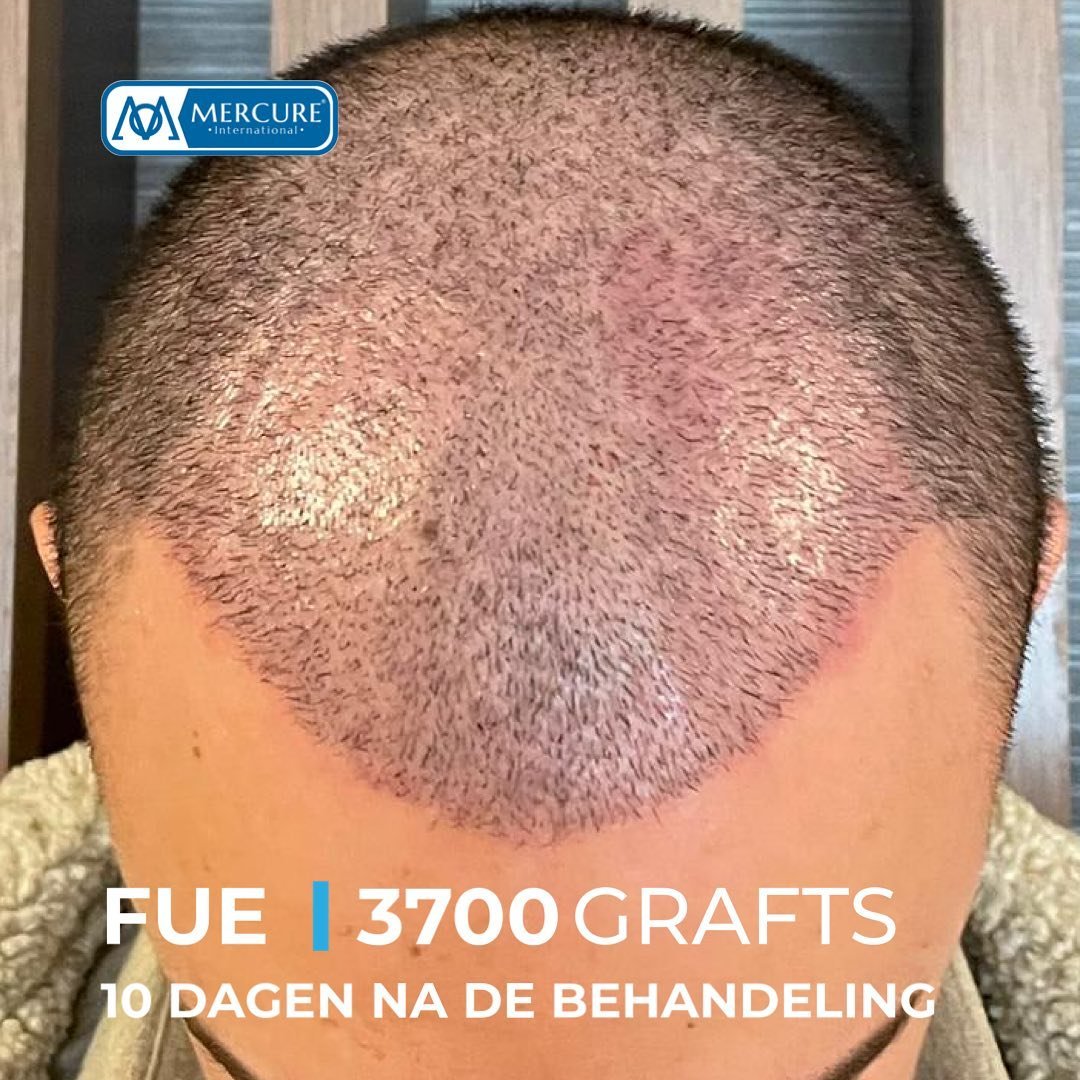We and third parties use cookies on our website. A cookie is a small file that is sent with pages of this website and stored by your browser on the hard drive of your device, so that you can be recognized.
FUE SAPPHIRE HAIR TRANSPLANTATION
FUE SAPPHIRE HAIR TRANSPLANTATION
An FUE Sapphire hair transplant is an advanced procedure used to treat hair loss and restore natural hair growth. The distinctive feature of this technique is the use of sapphire microblades to create transplantation channels for hair follicles.
FUE Sapphire stands for Follicular Unit Extraction using sapphire. FUE is a method where individual hair follicles are harvested from the patient’s donor area and then transplanted to the recipient area where hair loss occurs.
Sapphire microblades are used instead of traditional metal blades or needles to create very fine incisions. Sapphire is durable and sharp, allowing for highly precise incisions, resulting in fuller and more natural-looking outcomes.





WHAT IS THE DIFFERENCE BETWEEN CLASSIC FUE AND FUE SAPPHIRE HAIR TRANSPLANTATION
The main difference between FUE (Follicular Unit Extraction) and FUE Sapphire (Follicular Unit Extraction using sapphire) lies in the tools used to create the transplantation channels:
FUE (Follicular Unit Extraction): This is a hair transplantation method where metal blades or needles are used to make small incisions in the donor and recipient areas of the scalp. The hair follicles are individually harvested and transplanted. FUE is an effective method, but the incisions may be slightly larger and less precise than with FUE Sapphire.
FUE Sapphire (Follicular Unit Extraction using sapphire): In FUE Sapphire, sapphire microblades are used instead of metal blades to create the transplantation channels. Sapphire is highly durable and has a sharp edge, making the incisions smaller and more precise. This results in less scarring, less pain, and faster recovery compared to traditional FUE.
With FUE Sapphire technology, the transplant results are more accurate and natural due to the precision of the incisions. Both methods are effective in treating hair loss, but FUE Sapphire offers some advantages regarding scarring and recovery time. However, it is important to emphasize that the experience of the surgeon and the clinic where the procedure is performed play a greater role in achieving successful results.
WHAT IS THE DIFFERENCE BETWEEN CLASSIC FUE AND FUE SAPPHIRE HAIR TRANSPLANTATION
The main difference between FUE (Follicular Unit Extraction) and FUE Sapphire (Follicular Unit Extraction using sapphire) lies in the tools used to create the transplantation channels:
FUE (Follicular Unit Extraction): This is a hair transplantation method where metal blades or needles are used to make small incisions in the donor and recipient areas of the scalp. The hair follicles are individually harvested and transplanted. FUE is an effective method, but the incisions may be slightly larger and less precise than with FUE Sapphire.
FUE Sapphire (Follicular Unit Extraction using sapphire): In FUE Sapphire, sapphire microblades are used instead of metal blades to create the transplantation channels. Sapphire is highly durable and has a sharp edge, making the incisions smaller and more precise. This results in less scarring, less pain, and faster recovery compared to traditional FUE.
With FUE Sapphire technology, the transplant results are more accurate and natural due to the precision of the incisions. Both methods are effective in treating hair loss, but FUE Sapphire offers some advantages regarding scarring and recovery time. However, it is important to emphasize that the experience of the surgeon and the clinic where the procedure is performed play a greater role in achieving successful results.




The hair transplant process
An FUE (Follicular Unit Extraction) hair transplant is a popular method for restoring hair loss.
Your FUE Hair Transplantation Process:
Consultation:
The first step is a consultation with a hair transplant specialist. During this appointment, your hair situation is assessed, your preferences are discussed, and a treatment plan is formulated.
Local Anesthesia:
On the day of the procedure, the donor area (usually the back of the head) is anesthetized to minimize discomfort during the procedure.
Harvesting Hair Follicles:
Using a specialized instrument, individual hair follicles are harvested one by one from the donor area.
Preparation of Grafts:
The harvested hair follicles are carefully prepared and sorted before being transplanted.
Incisions and Implantation:
The doctor makes small incisions in the recipient area of the scalp and places the prepared hair follicles into these incisions.
Postoperative Care and Recovery:
After the procedure, care instructions are provided. You are often prescribed medications to reduce inflammation and pain. It is important to be cautious and follow the doctor’s recommendations.
Hair Growth and Results:
The transplanted hairs typically begin to grow after several months. The final result may take up to a year to become fully visible.
The success of an FUE hair transplant depends on various factors, including the experience of the doctor and postoperative care. It is advisable to choose a qualified specialist and have realistic expectations regarding the results.







The hair transplant process
An FUE (Follicular Unit Extraction) hair transplant is a popular method for restoring hair loss.
Your FUE Hair Transplantation Process:
Consultation:
The first step is a consultation with a hair transplant specialist. During this appointment, your hair situation is assessed, your preferences are discussed, and a treatment plan is formulated.
Local Anesthesia:
On the day of the procedure, the donor area (usually the back of the head) is anesthetized to minimize discomfort during the procedure.
Harvesting Hair Follicles:
Using a specialized instrument, individual hair follicles are harvested one by one from the donor area.
Preparation of Grafts:
The harvested hair follicles are carefully prepared and sorted before being transplanted.
Incisions and Implantation:
The doctor makes small incisions in the recipient area of the scalp and places the prepared hair follicles into these incisions.
Postoperative Care and Recovery:
After the procedure, care instructions are provided. You are often prescribed medications to reduce inflammation and pain. It is important to be cautious and follow the doctor’s recommendations.
Hair Growth and Results:
The transplanted hairs typically begin to grow after several months. The final result may take up to a year to become fully visible.
The success of an FUE hair transplant depends on various factors, including the experience of the doctor and postoperative care. It is advisable to choose a qualified specialist and have realistic expectations regarding the results.




advantages of FUE-Sapphire
FUE Sapphire (Follicular Unit Extraction using sapphire) hair transplantation offers several advantages over traditional hair transplant methods.
Some of the key benefits of FUE Sapphire include:
Precision:
The use of sapphire microblades results in very fine incisions, allowing hair follicles to be placed more accurately and densely. This leads to a more natural appearance of the transplanted hair.
Reduced Scarring:
The small incisions made with sapphire result in minimal scarring, making the outcome aesthetically more appealing. This is especially important if you wear your hair short.
Less Pain and Discomfort:
Patients often experience less postoperative pain and discomfort due to the precision of sapphire incisions.
Faster Recovery:
The recovery time after an FUE Sapphire hair transplant is generally shorter compared to traditional FUE techniques.
Less Swelling:
The use of sapphire can lead to less postoperative swelling, making the recovery process more comfortable.
Natural Results:
Improved precision allows the transplanted hairs to integrate naturally into existing hair growth.
Reduced Blood Loss:
The use of sapphire microblades can result in less blood loss during the procedure.
It is important to note that the experience and skill of the surgeon play a significant role in achieving successful results. If you are considering an FUE Sapphire hair transplant, it is advisable to consult with a qualified and experienced hair transplant specialist for a detailed evaluation and advice.
DISADVANTAGES OF FUE-SAPPHIRE
While FUE Sapphire (Follicular Unit Extraction using sapphire) hair transplantation has many advantages, there are also some drawbacks and considerations that need to be discussed:
The disadvantages of FUE Sapphire are:
Cost:
FUE Sapphire procedures can be more expensive than traditional FUE methods due to the use of sapphire instruments and the specialized training required for surgeons.
Availability:
Not all clinics and hair transplant specialists offer FUE Sapphire procedures, which can limit availability, especially in certain locations.
Surgeon’s Experience:
The results of an FUE Sapphire hair transplant heavily depend on the experience and skill of the surgeon. It is crucial to choose a qualified specialist to maximize the benefits of the technique.
Need for Adequate Donor Hair:
A successful FUE Sapphire transplant requires a sufficient amount of suitable donor hair. This can be a limiting factor for some patients with extensive hair loss.
Requirement to Trim Hair:
It is necessary to shave the patient’s hair to a few millimeters prior to the hair transplant. This may be a concern for those who prefer to keep their long hair.
It is essential to weigh these disadvantages against the benefits and discuss your specific needs and goals with a qualified hair transplant specialist before deciding which method is best for you.







